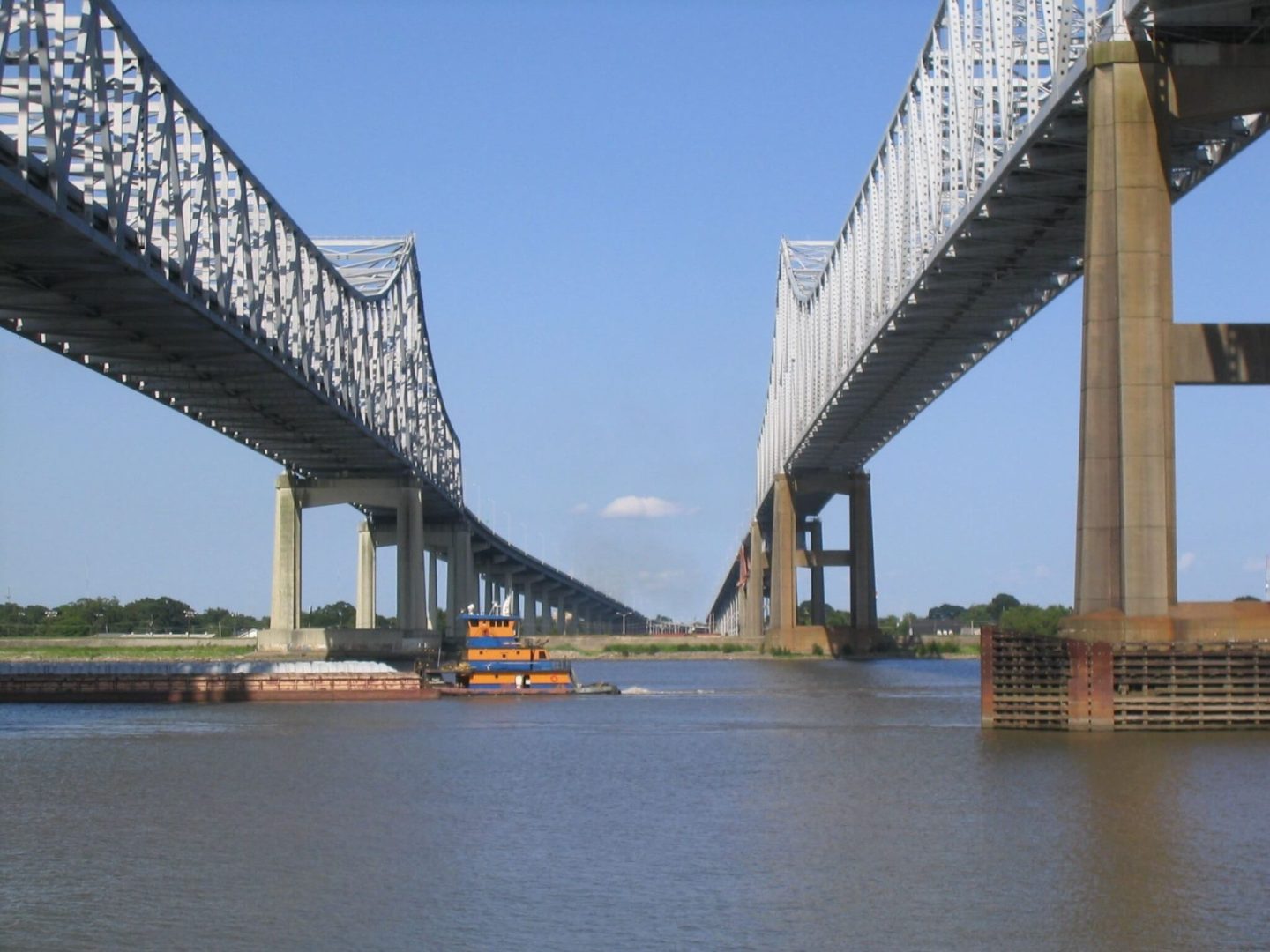
Crescent City Connection lighting plans moving forward, but funding not yet in place
By Ben Myers
Source: The Times Picayune | The New Orleans Advocate
March 6, 2023
State officials are advancing new plans to light up the Crescent City Connection, the distinctive twin bridges connecting downtown New Orleans with the west bank of the Mississippi River.
A Pennsylvania design firm, Modjeski and Masters Inc., has been chosen to design the estimated $16.5 million project, which officials hope to complete by the end of the next year – assuming they find a way to pay for it.
Though the design is moving ahead, a state highway department spokesperson cautioned that no funding source has been identified for construction.
“There’s no guarantee this project will see a construction phase – projects can and do get delayed, or canceled for one reason or another – but we are hopeful that public opinion supports the project and it moves quickly from design to construction,” Daniel Gitlin, a Department of Transportation and Development spokesperson, said in an email.
Modjeski and Masters designed both bridges, which were built in succession over three decades ending in 1985. The Young Leadership Council then spearheaded a fund-raising push to install the first decorative lighting, and the bridge first lit up the city’s skyline in 1987. But wear and tear over the next two decades led to malfunctions, including a blackout in 2013.
The president of the Young Leadership Council at the time, Richard Pavlick, wrote in a letter to The Times-Picayune that the bridge lighting is “a symbol of unity and vitality.”
“The CCC illuminating our skyline has become part of New Orleans, part of our identity,” Pavlick wrote.
The outage coincided with a turning point in the history of the Crescent City Connection and its management: the expiration of a $1 toll on the eastbound side, long a sore spot for west bank residents who called it an unfair tax.
The toll, which generated more than $20 million annually for the bridge, was officially justified as a means to pay off construction loans. It had always been scheduled to lapse in 2012. But a coalition of business interests pushed for its renewal on a ballot measure, noting that it was an important source of funding for other expenses – including lighting, a $600,000 annual maintenance expense, with just a fraction of that going to the decorative display.
But toll critics pointed to a history of waste and other wayward spending of toll revenue. The Bureau of Governmental Research found that 16 cents of every toll dollar went to the expense of toll collecting. Still, the renewal passed by three dozen votes out of more than 300,000 cast.
The result withstood a recount. But it didn’t get past a Baton Rouge judge who found that provisional ballots disenfranchised west bank voters by excluding the toll referendum. The judge ordered a second vote, and the toll renewal was trounced in the 2013 do-over: nearly 80% voted against it.
Though the toll was eliminated, there was enough unspent from prior collections for the DOTD to continue to maintain the decaying lighting system. Then came Hurricane Ida, which “dealt the final blow,” Gitlin said.
“After the hurricane, when a bulb would go out and they would try and replace it, the bulb would short out right away,” Gitlin said. “They stopped trying to replace bulbs and realized the entire electrical system was compromised.”
A new, programmable LED system will provide “a much more efficient way to do the same job, and the upkeep is much easier,” Gitlin said.
And this time around, the DOTD won’t have to cover maintenance. New Orleans & Co., a private tourism marketing organization, had agreed to shoulder that cost, according to Kelly Schulz, the group’s spokesperson.
“The project is in the early stages and specific details are still being worked out,” Schulz said.
Fair Use Notice
This site occasionally reprints copyrighted material, the use of which has not always been specifically authorized by the copyright owner. We make such material available in our efforts to advance understanding of issues and to highlight the accomplishments of our affiliates. We believe this constitutes a “fair use” of any such copyrighted material as provided for in section 107 of the US Copyright Law. In accordance with Title 17 U.S.C. Section 107, the material on this site is available without profit. For more information go to: US CODE: Title 17,107. Limitations on exclusive rights: Fair use. If you wish to use copyrighted material from this site for purposes of your own that go beyond “fair use,” you must obtain permission from the copyright owner.
